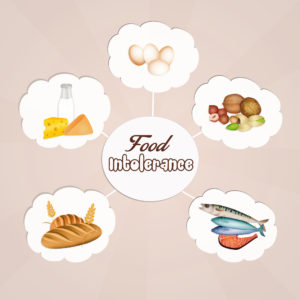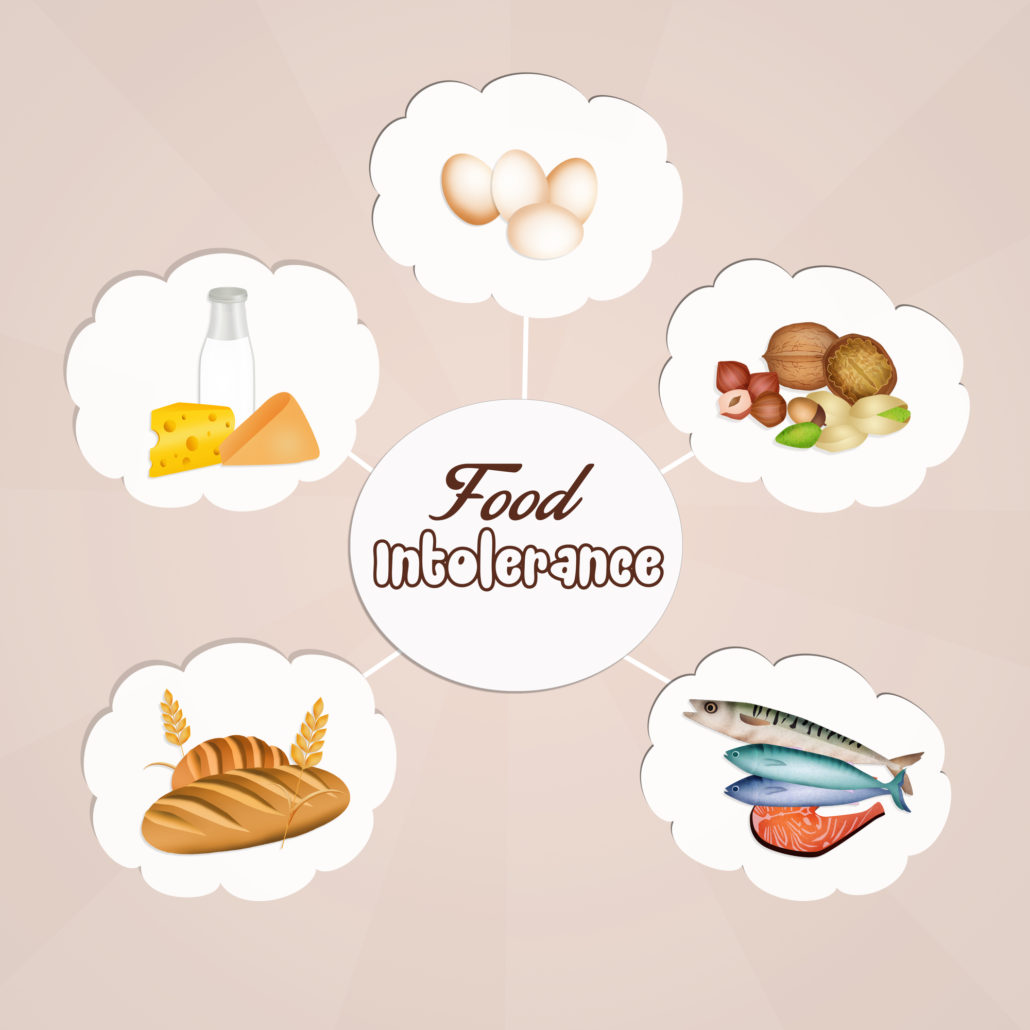Can My Symptoms Actually Be a Food Intolerance?

Food intolerance or “sensitivities” can affect you in so many ways.
And they’re a lot more common than most people think.
We are not talking about anaphylaxis or immediate allergic reactions that involve an immune response. Those can be serious and life-threatening. If you have any allergies, you need to steer clear of any traces of foods you are allergic to, and speak with your doctor or pharmacist about emergency medication, if necessary.
What we are talking about today, is an intolerance, meaning you do not tolerate a specific food very well and it causes immediate or chronic symptoms anywhere in the body. Symptoms can take hours or even days to show themselves. And symptoms can be located just about anywhere in the body.
This is what makes them so tricky to identify.
Symptoms of food intolerance’s:
There are some common food intolerance’s that have immediate and terribly painful gastrointestinal symptoms, such as lactose intolerance or celiac disease. These can cause stomach pain, gas, bloating, and/or diarrhea; symptoms can start immediately after eating lactose or gluten.
On the other hand, other more insidious symptoms may not be linked to foods in an obvious way.
Symptoms like:
- Chronic muscle or joint pain
- Sweating, or increased heart rate or blood pressure
- Headaches or migraines
- Exhaustion after a good night’s sleep
- Autoimmune conditions like Hashimoto’s or rheumatoid arthritis
- Rashes or eczema
- Inability to concentrate or feeling like your brain is “foggy”
- Shortness of breath
If your body has trouble digesting specific foods, it can affect your hormones, metabolism, or even cause inflammation and result in any of the symptoms listed above. And these can affect any (or all) parts of the body, not just your gastrointestinal system.
How to prevent these intolerance’s:
The main thing you can do is to figure out which foods or drinks you may be reacting to and stop ingesting them.
We know, we know…this sounds so simple, and yet it can be SO HARD.
The best way to identify your food/drink triggers is to eliminate them.
Yup, get rid of those offending foods/drinks. All traces of them, for four full weeks and monitor your symptoms.
Coach Shannon actually did a 28 day elimination program and gradually reintroduced foods to her system and was able to track a few of the offenders – the main culprit for her was certain types of dairy and processed soy products.
She spent the first seven days to ween off of the food and drink: alcohol, sugar, soy, dairy, and gluten. She then spent two weeks not eating or drinking any of them at all. Then on week 4 re-introduced on of the foods on one a day then removed it again, and repeated until all were introduced. We found that she only had issues when some dairy and processed soy products were reintroduced.
You are welcome to try this as well, you’ll see if things get better, then you need to decide whether it’s worth it to stop ingesting them, or if you want to slowly introduce them back one at a time while still looking out to see if/when symptoms return.
Or you can start here if eliminating two of the most common food intolerance’s:
Here are two of the most common triggers of food intolerance’s:
- Lactose (in dairy – eliminate altogether, or look for a “lactose-free” label – try nut or coconut milk instead).
- Gluten (in wheat, rye, and other common grains – look for a “gluten-free” label – try gluten-free grains like rice, quinoa & gluten-free oats).
Like you know this is by no means a complete list, but it’s a good place to start if you don’t want to eliminate the five that Coach Shannon did because lactose intolerance is thought to affect up to 75% of people, while “non-celiac gluten sensitivity” can affect up to 13% of people.
So, if you can eliminate all traces of lactose and gluten for three to four weeks, it can help in confirming whether either or both of these, are a source of your symptoms.
Yes, dairy and grains are a part of many government-recommended food guidelines, but you absolutely can get all of the nutrients you need if you focus on replacing them with nutrient-dense foods.
A reliable way to monitor how you feel after eating certain foods is to track it. After every meal or snack, write down the foods you ate, and any symptoms so you can more easily spot trends.
In the e-mail we sent you there is a link for a download for a free copy of our Weekly Diet Diary/Food Journal to help you track, just click on the link and save to your desktop.
And, as mentioned earlier, symptoms may not start immediately following a meal. You may find, for example, that you wake up with a headache the morning after eating bananas.
You might be surprised what links you can find if you track your food and symptoms well!
IMPORTANT NOTE: When you eliminate something, you need to make sure it’s not hiding in other foods, or the whole point of eliminating it for a few weeks is lost. Restaurant food, packaged foods, and sauces or dressings are notorious for adding ingredients that you’d never think are there.
You know that sugar hides in almost everything, but did you also know that wheat is often added to processed meats and soy sauce, and lactose can even be found in some medications or supplements?
When in doubt you HAVE to ask the server in a restaurant about hidden ingredients, read labels, and consider cooking from scratch.
What if it doesn’t work?
If eliminating these two common food intolerance’s doesn’t work, then you can go one step further to eliminate all dairy (even lactose-free) and all grains (even gluten-free) for four weeks.
Keep in mind, you may need to see a qualified healthcare practitioner for help, and that’s OK. We don’t want you to continue suffering if you don’t have to!
Thank you,

References:
http://www.dietvsdisease.org/11-warning-signs-you-have-a-food-intolerance/
https://authoritynutrition.com/lactose-intolerance-101/
https://authoritynutrition.com/signs-you-are-gluten-intolerant/
http://www.precisionnutrition.com/food-sensitivities-health-infographic

